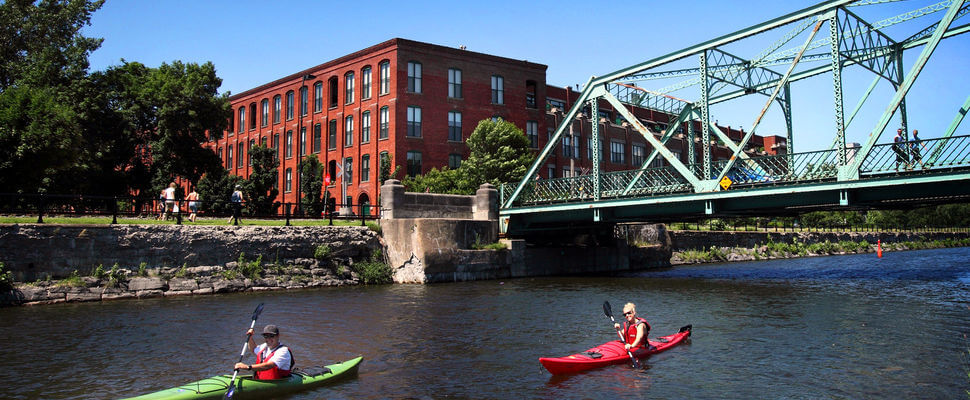Should Canadians live on former industrial sites?
Public officials say sites along Montreal's Lachine Canal are safe for residents to live on—but pollution remains a problem
Patrick Maynard

Montreal’s Lachine Canal. Photo courtesy of MTLBlog.
The Lachine Canal is emblematic of Montreal’s revival. Tourists write about it. Modern condos sprout up next to it. A bike path running along the waterway is rated among the world’s best rides.
But alongside the canal’s booming recreational offerings are the remnants of its industrial history.
A review of a national database of federal industrial cleanup found that three notable contaminated areas in Canada sit within a kilometre of large population clusters (20,000 or more people), and all three of those sites are along the Lachine Canal.
“For more than a century, the Lachine Canal has been ground zero for Canadian debates over industrialization, urban poverty… and gentrification,” says Concordia University historian Steven High.
Now, as the area densifies at a steady clip, concerns over environmental contamination are bubbling to the surface. While Parks Canada assures the canal and surrounding area aren’t a public health concern, not everyone is convinced. In the summer of 2015 alone, the canal was closed to boaters more than a half-dozen times after sewage leaks posed health hazards. Even activist Erin Brockovich chimed in on the 2015 sewage issues, posting on Facebook that the leaks were “pure TNT (turds ‘n’ tampons).”
One of the three contaminated sites has been mostly cleaned up, but the two others have a long way to go. One site hosts more than 3,000 tons of petroleum hydrocarbons (PHCs), polycyclic aromatic hydrocarbons (PAHs), metal/metalloid/metallic contaminants, and “other organic” contaminants. A cleanup plan for the site was only completed after seven years of stagnation. The site’s cleanup, according to Parks Canada representative Audrey Godin-Champagne, “will be managed during the construction phase of the new bicycle path project in 2018-19.” The other contaminated area has just over 500 tons of the same toxins, and there’s no clear plan for cleaning it.
Meanwhile, some local politicians are angling to slow development in the area they say isn’t prepared for more population density. “As of today, the open bar for developers is over,” councillor Craig Sauvé told media last year. “From now on it will be we who decide, with the input of citizens, through the development of a good planning strategy.”
Read the author’s interviews from the story on GitHub.